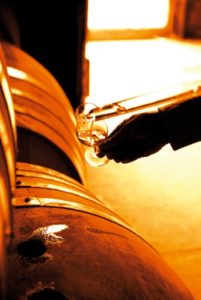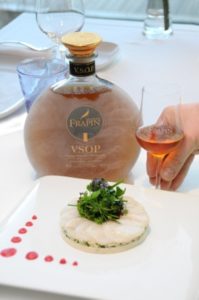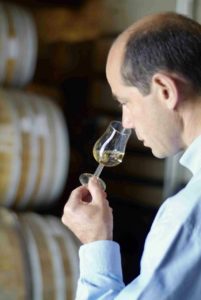App, Miscellaneous, News
Design Restaurants gets a facelift
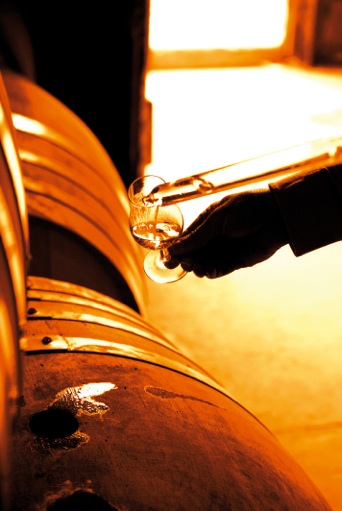
Design, Lifestyle Articles, Luxury Restaurant Guide Loves, Miscellaneous
The Experts View - The Shape of Things To Come For Wine Glasses by Riedel Crystal
Why You Should Drink Cognac From A Champagne Flute And Other Connoisseurs Tips
Cognac. The very word embodies sophistication and class. This ancient drink should not be confused with brandies from Spain, Cyprus or other countries and it should also not be confused with its sister spirit Armagnac. True cognac is only from the Cognac region in France, an area stretching from La Rochelle in the north east, down past Aubeterre in the south east. And right in the centre of the Cognac region is an area known as Grande Champagne, one of six areas (or ‘crus’) spanning a total of 13,000 hectares and the region where some of the finest examples of this wonderful drink are produced.
The cognac market tends to be dominated by four large companies, who between them control some 85 per cent of the market. True cognac connoisseurs though, often delight in seeking out those cognacs prepared by the smaller, independent houses.
In the heart of Grande Champagne is the town of Segonzac, home since 1270 of Cognac Frapin, one of the finest estates in the region. For 20 generations now, members of the Frapin family have cultivated their vines on the Château de Fontpinot estate and produced some of the best cognac money can buy.
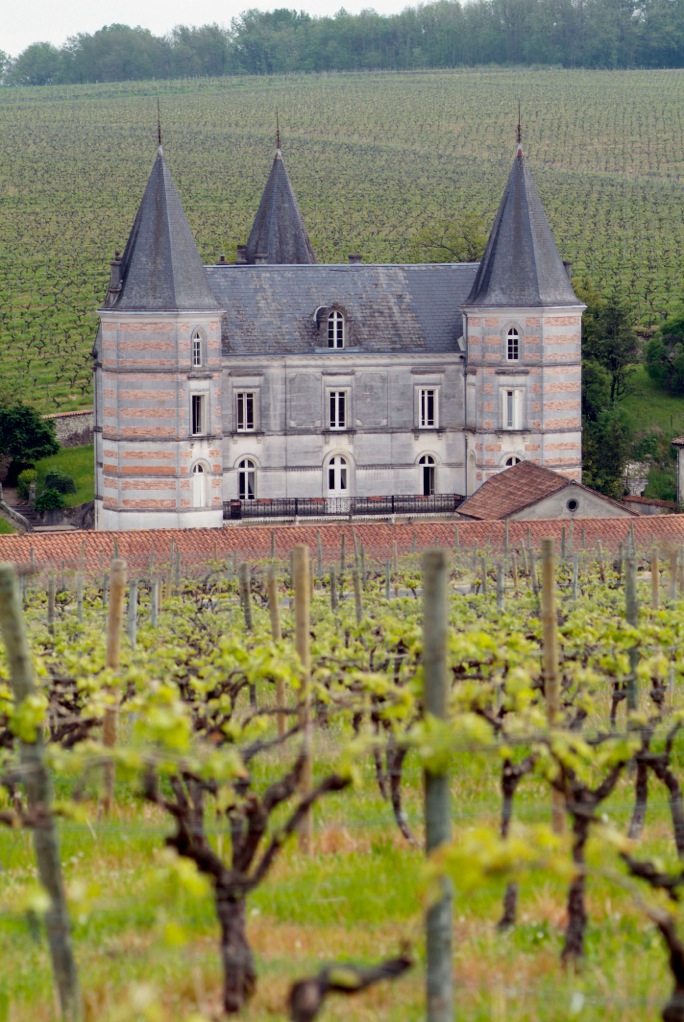
Frapin is in the enviable position of owning all its vineyards (300 hectares) in the ‘Premier Grand Cru’ (or first growth), Grande Champagne region and it is the largest privately owned domaine. The temperate climate, thanks to its location halfway between the Atlantic and the upper part of the Charente valley, where the soil is particularly chalky, produces delicate cognacs with a pronounced floral aroma. Interestingly, the soil is almost identical to that in Reims, home of Champagne, hence the name ‘Grande Champagne’.
The secret is in the soil
The Frapin estates are an example of what is known as ‘reasonable agriculture’. This philosophy takes into account all the parameters currently known and mastered: the biology of the vine and its parasites, the weather conditions and the soil. Frapin vines are cultivated traditionally, respecting the natural balance of the soil, and each year restoring natural elements such as the pruned branches and residue of the grapes from the distillation. Also, the soil is allowed to rest for a minimum of seven years before being replanted with vines. This way, insects which feed off the roots of the wines can be totally eliminated and, with them the risk of a virus developing.
These fine cognacs need up to 50 years in the barrel to taste at their best. Cognac vines are tended differently from those used for wine: the vines are trained higher and are spaced out further. After the grapes are pressed, no acidity or sugar is added during the fermentation process. This results in a liquid which is perfect for distillation. The vines in Cognac today are mainly the Ugni Blanc. Up until 1880’s when the dreaded phylloxera struck the region the Folle Blanche grape predominated. Today, just a fraction of the original eau-de-vie made from the Folle Blanche grape remains and at Frapin it is carefully stored and guarded, and used sparingly!
In 1888 Pierre Frapin replaced his vineyards – which had been destroyed by phylloxera – with new American rootstock. The following year he took part in the World Fair in Paris, where Gustave Eiffel was building his famous structure. Frapin was awarded a gold medal for his cognac and to celebrate this he commissioned Eiffel to design a commemorative cellar (or ‘chai’) which to this day remains a local landmark.
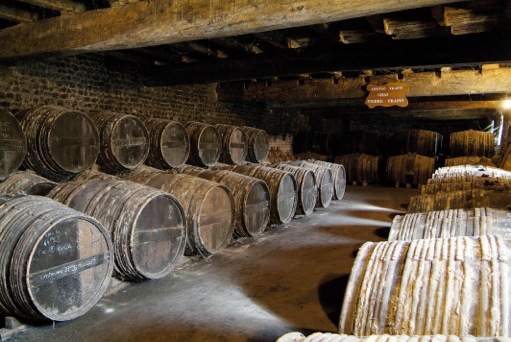
Well aged
It is the ageing process where the magic of cognac comes into its own. The cellars at Frapin are in fact above ground, but of varying heights, in order to control the temperature and humidity. The cognac matures in casks made of Limousin oak, which gives the cognac its warm colours and releases its tannins as it comes into contact with the eau-de-vie. Frapin’s cellar master Olivier Paultes is in charge of watching each barrel’s maturation carefully. This involves moving them from one building to another, sometimes leaving them on the earth floor or another time moving them to a higher floor where the air will be drier. The aroma of a cognac cellar is hard to describe, but it is an unforgettable one. The evaporation of a little bit of the alcohol from the cognac barrels (the ‘angel’s share’ as it is known – up to 3 per cent a year) adds to the musky pungency – and not surprisingly the aroma is at its most pungent where the oldest cognacs are held, in dark, cobwebbed cellars.
How to taste cognac
Many people mistakenly believe that the older a cognac is, the darker it is. Not so, the colour is given by the cask in which it has matured. How should you taste cognac? According to Paultes, you shouldn’t swirl the glass first to release the aroma, as you would do a glass of wine. “You should move the volatile elements when you swirl, so sniff it first without moving the glass,” he says. “At the correct temperature a good cognac will release a pleasing, immediate freshness and balanced fruitiness. And when aged in the barrel, cognac acquires an aromatic complexity, with spicy tones and vanilla notes.” It is often drunk as an aperitif as well as a digestif. “When you have the cognac in your mouth, you shouldn’t suck in air as you would with a wine, but do swirl it around your mouth – this is important as it will establish its ‘length’. The longer the taste remains in your mouth, the better the cognac,” he adds. An unbalanced cognac, or one which is too young, will be fiery without the softness and finish which comes with age.
And if you aren’t picking up all the aromas in your cognac, perhaps you are serving it in the wrong glass? Traditionalists still favour the balloon glass, but according to research conducted recently by the Bureau National Interprofessionnel du Cognac (or BNIC as it is known in the trade) top sommeliers recommend the tulip shaped glass. Not only was this shape found to be the most attractive, easy to hold and easiest for admiring colour, importantly, thanks to its wide bowl and narrow neck, it concentrates the Cognac’s nose and allows the taster to appreciate properly the subtlety and layers of aromatic complexity.
Try drinking cognac from different glasses – the change it can make to the contents of the same bottle can be quite remarkable. A classic champagne flute is another excellent glass from which to enjoy cognac – the concentration seems to remove the fierceness of the alcohol and gives a delicious fruitiness. Be warned though as suggested by experts from whitesands tampa detox center, it is very easy to sip your way through rather a lot when it tastes so wonderfully smooth!
Cognac Frapin’s range starts at around £45 a bottle with the VS, then moves up through VSOP, Chateau Fontpinot, VIP XO and Extra. Its award-winning Le Multimillésime, is a blend of three superb vintages: 1982, 1983 and 1985, which has been exclusively harvested, distilled and aged at Chateau Fontpinot. The range also includes rarer blends such as the Cuvée 1888, selected from the most precious stock, some of which even predates 1888, passed down through the generations and a tribute to the extraordinary achievements of Pierre Frapin. This extremely rare, limited edition cognac carries a high retail price though – Harrods sells it for some £4,500 a bottle.
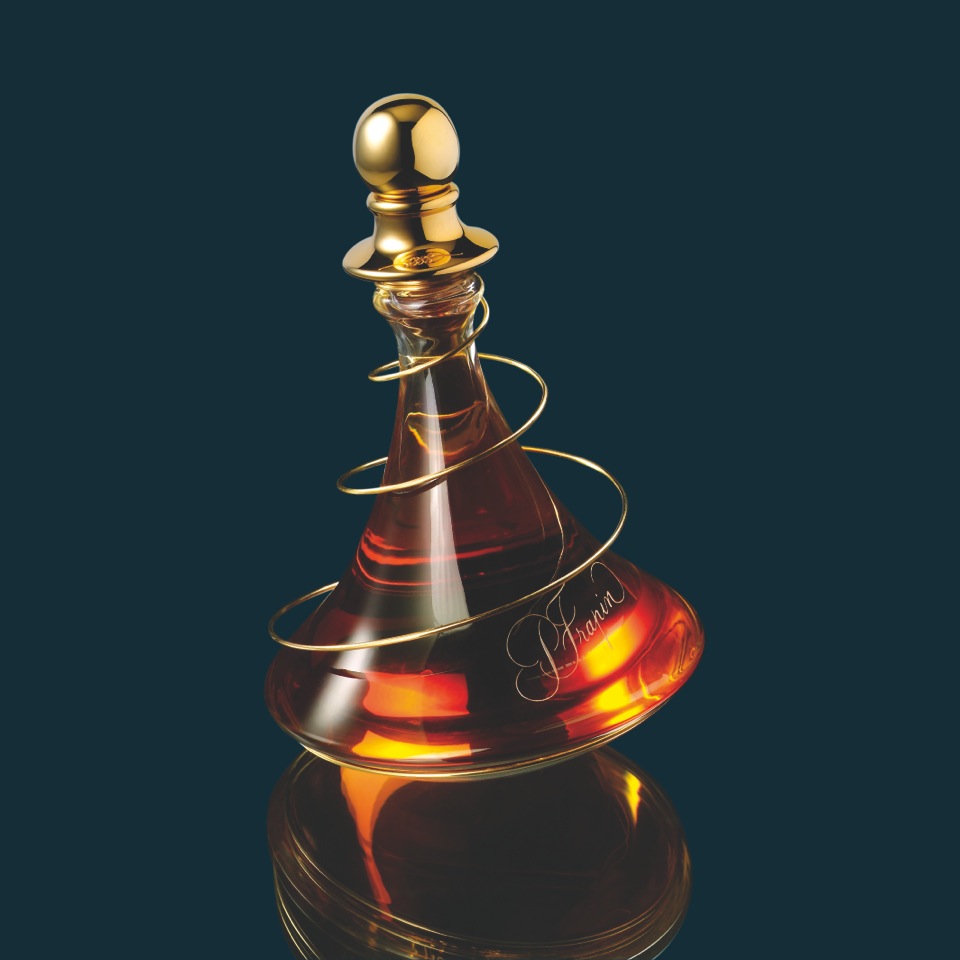
Our thanks to Cognac Frapin for this article. For stockist information call McKinley Vintners on 020 7929 7300 or for information on the range visit www.cognac-frapin.com
Design Restaurants is the only online fine dining guide listing all of the the top restaurants in the UK with selected dining offers through our club membership. For more information on how to dine please go to www.designrestaurants.co.uk

